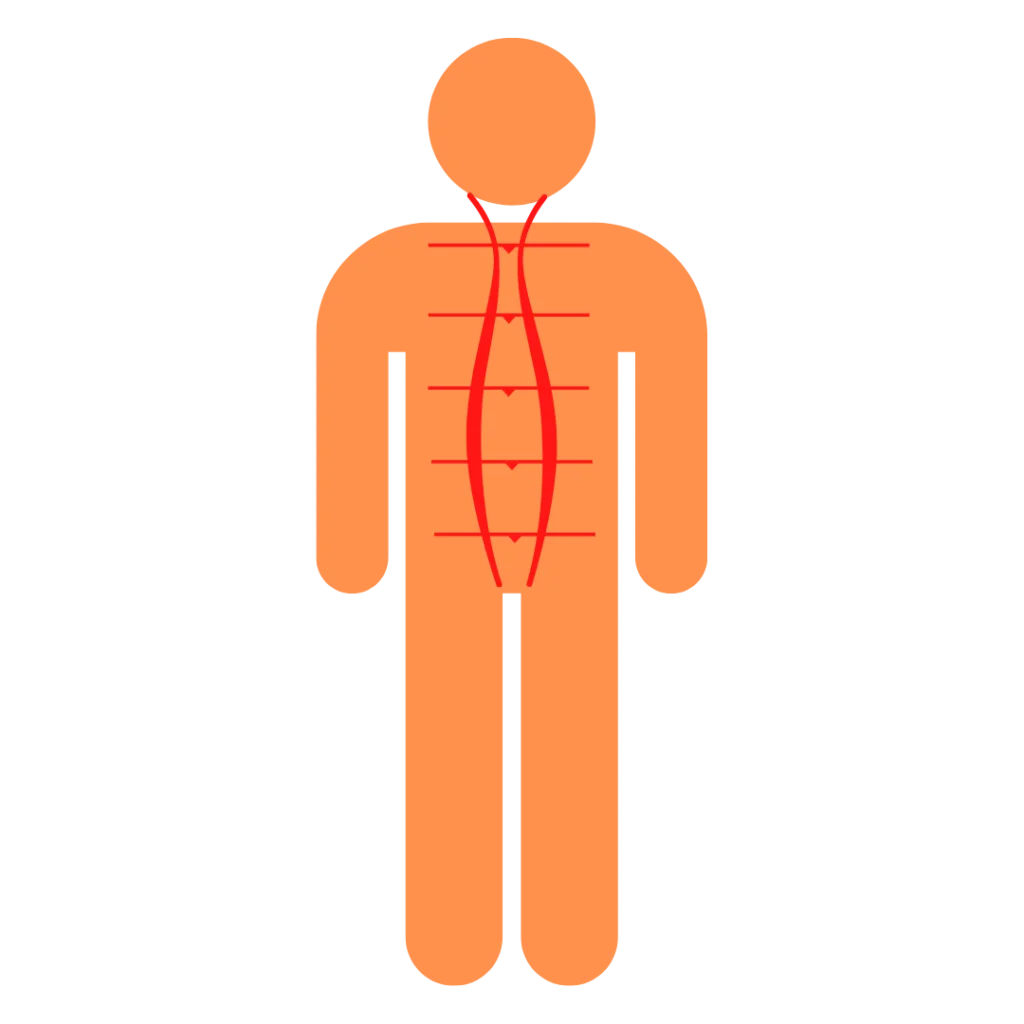Pheochromocytoma & Paraganglioma in Children
- Pheochromocytoma & Paraganglioma are extremely rare in children. Some of the facts related to this entity in children are as follows
- 1% of children with high blood pressure are likely to have Pheochromocytoma
- Most of these tumours are not cancerous in their behaviour.
- 80% children with Pheochromocytoma/Paraganglioma will have underlying genetic mutation to account for the disease.
- Likelihood of bilaterality, and multiplicity of the disease is higher in children and this necessitates life long monitoring in them.
- Risk of malignant Pheochromocytoma and Paraganglioma in children is approximately 10-13 % and the metastasis may develop years after the presentation.


Symptoms and signs
Symptoms can be highly viable in children. Amongst the common symptoms are:
- Headache
- Sweating
- Vomiting
- Altered sensorium, unconsciousness
- Cardiac failure
- Visual disturbances
- Poor school performance
- High blood pressure
Children who are diagnosed as part of family screening, may have few or no symptoms. They may even have normal blood pressure.
Up to 70 to 80 % of children may have underlying genetic mutation as cause to the underlying disorder. This makes it mandatory to do the genetic tests for all the children. Once the genetic diagnosis is ascertained, monitoring for the additional disease components and risk of malignancy may be done effectively as per available guidelines for different genetic mutation.
Method of diagnosing Pheochromocytoma and Paraganglioma are same for children and adults with blood/urine test and Imaging. Some of the children, especially when scrrened as part of family screening may not have positive results on blood/urine tests but yet have the tumours on imaging.
- Principles of treatment across the age groups are similar with surgery being the desirable first option.
- Preparing patients before the surgery with appropriate medications to control blood pressure for safe surgical outcomes is required along with salt supplements to maintain blood volume. An experienced team management is key to the successful outcome in them. In an event of bilaterial adrenal pheochromocytoma, bilateral adrenalectomy may be necessary where attempt is made to spare the cortex on one side so as to avoid long term hormone replacement.
- Rarely these tumours may be malignant when combination of treatment modality may be necessary amongst surgery, radiotherapy, chemotherapy, targeted radio pharmaceutical based therapy amongst other options.

WHAT IS
Pheochromocytoma & Paraganglioma in Children?
SEE THIS PAGE FOR MORE INFORMATION ON COVID-19 & PHEO PARA
Pheochromocytoma & Paraganglioma are extremely rare in children. Some of the facts related to this entity in children is as follows
One % of children with high blood pressure are likely to have Pheochromocytoma
80 % children with Pheochromocytoma/Paraganglioma will have underlying genetic mutation to account for the disease.
Likelihood of bilaterality, and multiplicity of the disease is higher in children and this necessitates life long monitoring in them.
Risk of malignant Pheochromocytoma and Paraganglioma in children is approximately 10-13 % and the metastasis may develop years after the presentation.
SYMPTOMS and Signs
Symptoms can be highly viable in children. Amongst the common symptoms are:
- Headache
- Sweating
- Vomiting
- Altered sensorium, unconsciousness
- Cardiac failure
- Visual disturbances
- Poor school performance
- High blood pressure
Children who are diagnosed as part of family screening, may have few or no symptoms. They may even have normal blood pressure.


Genetics
Up to 70 to 80 % of children may have underlying genetic mutation as cause to the underlying disorder. This makes it mandatory to do the genetic tests for all the children. Once the genetic diagnosis is ascertained, monitoring for the additional disease components and risk of malignancy may be done effectively as per available guidelines for different genetic mutation.
DIAGNOSIS
Method of diagnosing Pheochromocytoma and Paraganglioma are same for children and adults with blood/urine test and Imaging. Some of the children, especially when scrrened as part of family screening may not have positive results on blood/urine tests but yet have the tumours on imaging.


TREATMENT
Principles of treatment across the age groups are similar with surgery being the desirable first option.
Preparing patients before the surgery with appropriate medications to control blood pressure for safe surgical outcomes is required along with salt supplements to maintain blood volume. An experienced team management is key to the successful outcome in them. In an event of bilaterial adrenal pheochromocytoma, bilateral adrenalectomy may be necessary where attempt is made to spare the cortex on one side so as to avoid long term hormone replacement.
Rarely these tumours may be malignant when combination of treatment modality may be necessary amongst surgery, radiotherapy, chemotherapy, targeted radio pharmaceutical based therapy amongst other options.
PATIENT RESOURCES
find the resources and information
you need to take action
let’s stay in touch!
Stay up to date with the latest research and news, events we are hosting, and other organizations that we are participating with as we move forward to find a cure!



